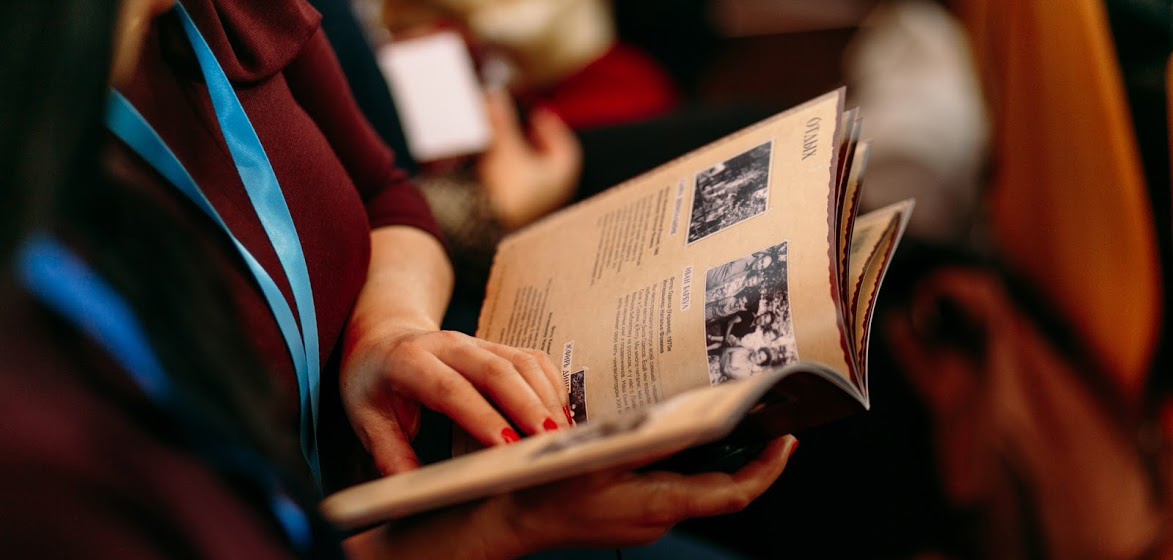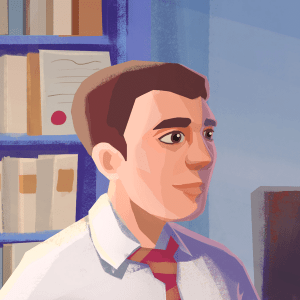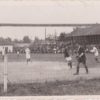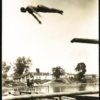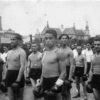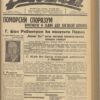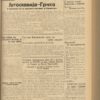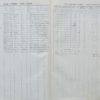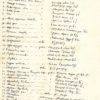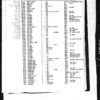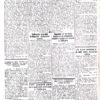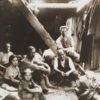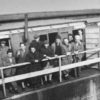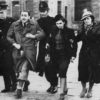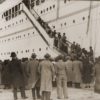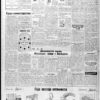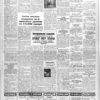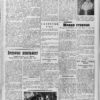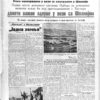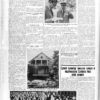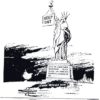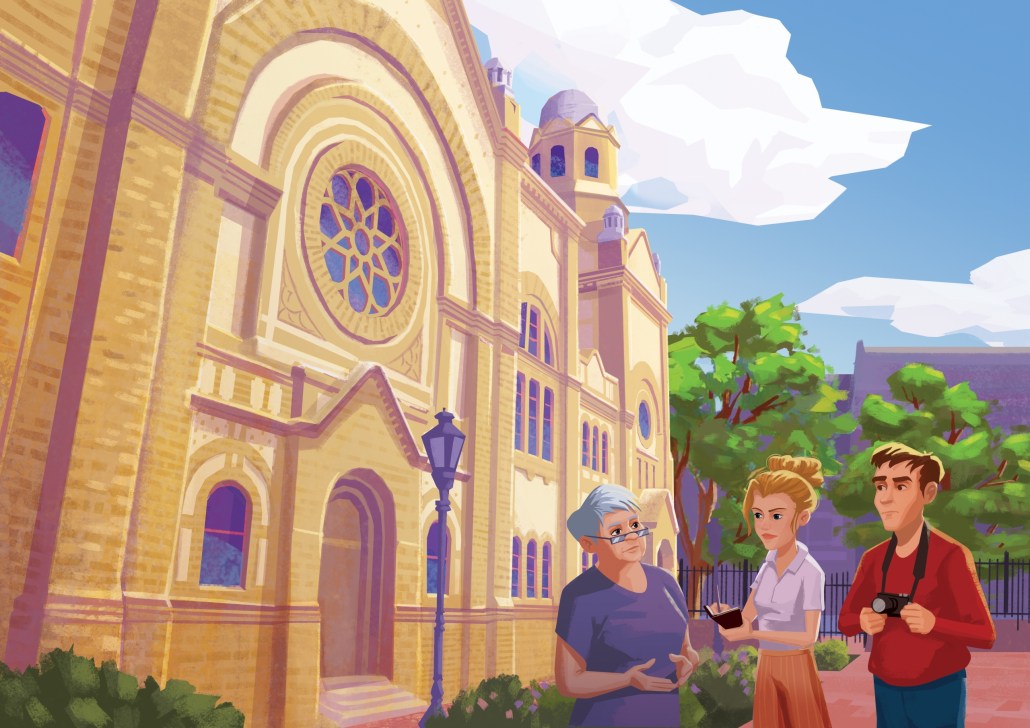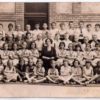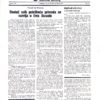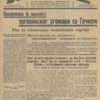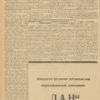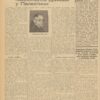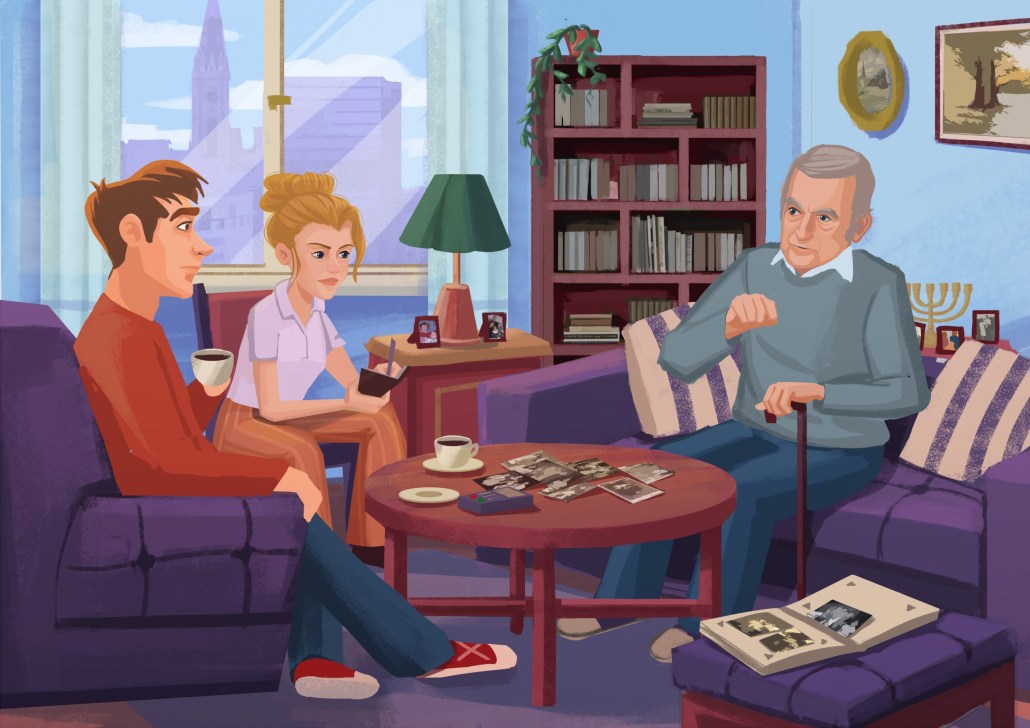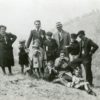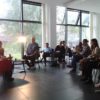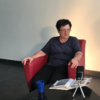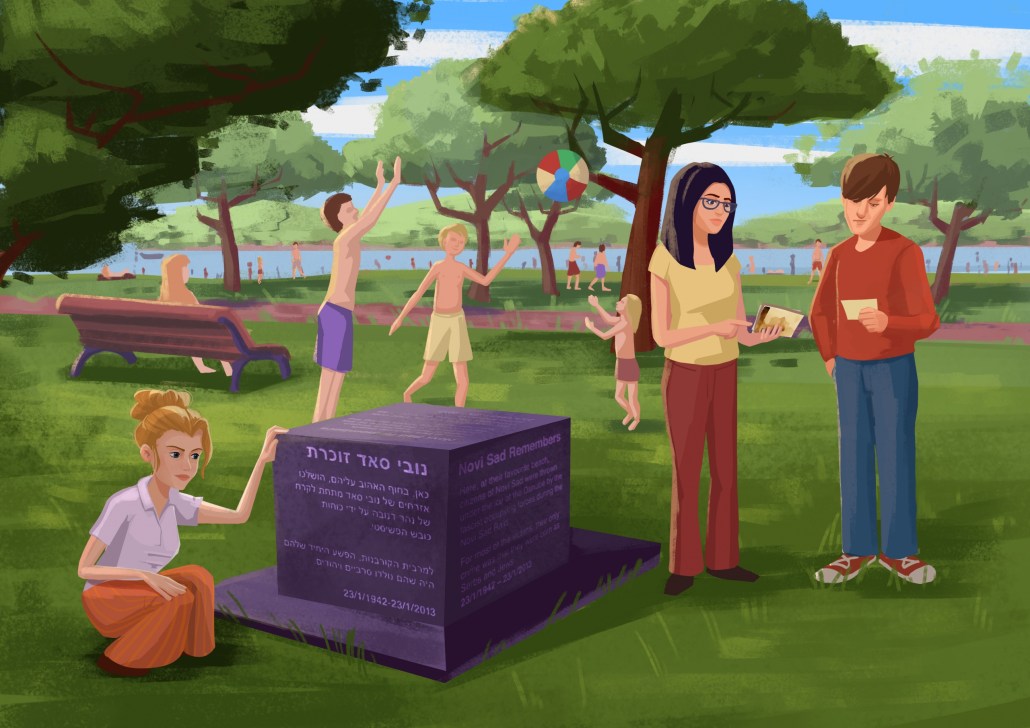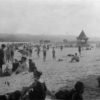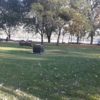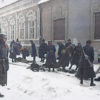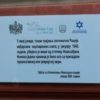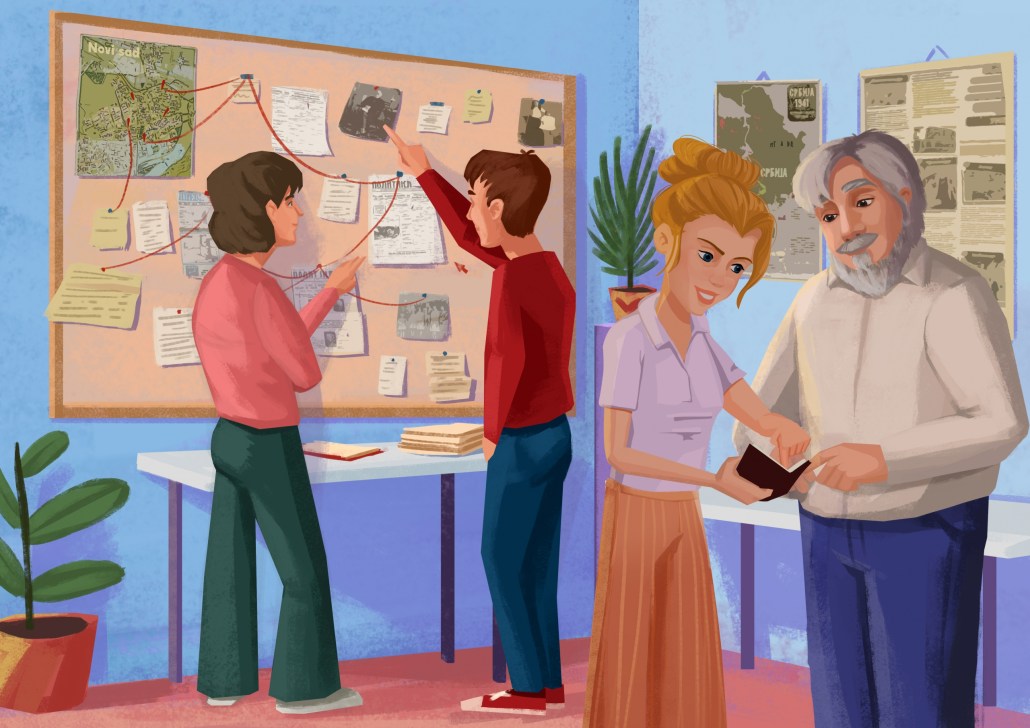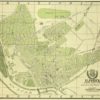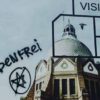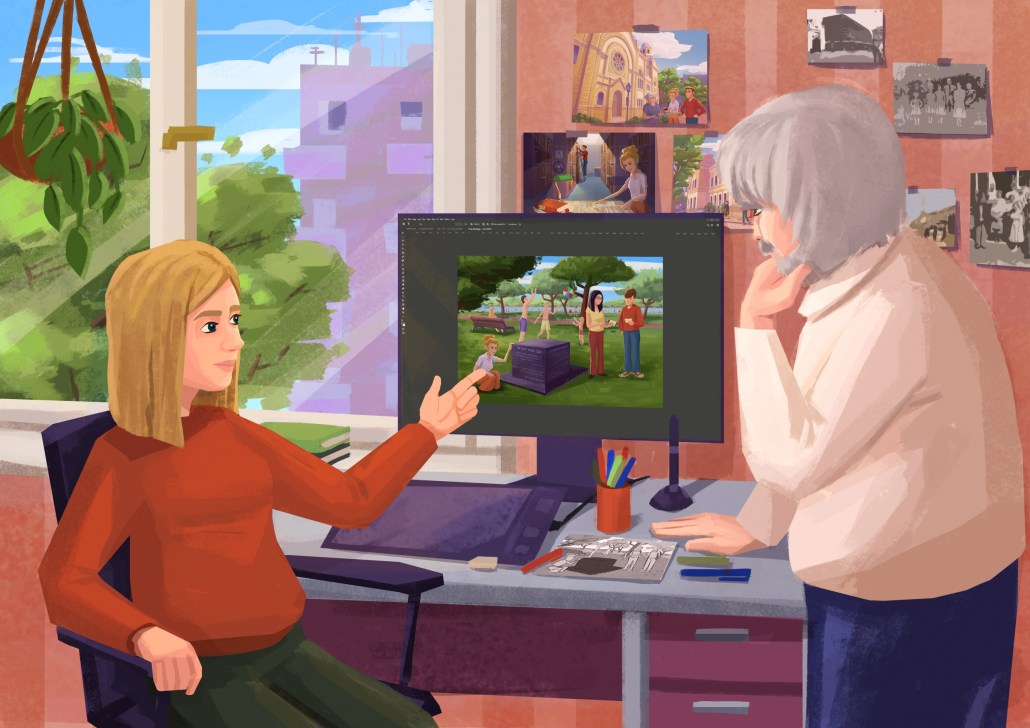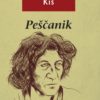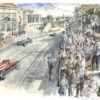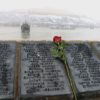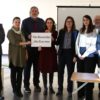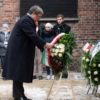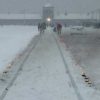The HANNAH Digital Graphic Novel will be available online, to be used on the internet, or downloaded as pre-packed PowerPoint for use on a big screen in the classroom, or as printable PDF. Its main topics will be about the Jewish life and culture, the Holocaust, antisemitism and the current life of Jewish communities. Also, a manual for teachers, archivists and librarians will be available as PDF for download, as well as tasks for students. All material will be available in Greek, German, Polish, Serbian and English.
Graphic Novel
Creating a Graphic Novel about the Novi Sad Raid
The Novi Sad Raid
After Germany and its allies invaded the Kingdom of Yugoslavia in April 1941, Serbia was divided into several occupied zones. Hungary occupied and annexed Bačka, a region in the western part of Vojvodina.
The Raid in southern Bačka, or the Novi Sad Raid, is a series of military and police operations carried out by the Hungarian armed forces against the Serbian and Jewish civilians during the period of January 4 and 29, 1942, in predominantly Serbian populated communities of Bačka and in Novi Sad. On the streets of Novi Sad and along the banks of the Danube, Hungarian fascists killed around 4 000 people, mostly Serbs (at least 2,578) and Jews (at least 1,068), and others too.
This is a graphic novel about the making of a graphic novel on the Novi Sad Raid.
Characters
Creating a Graphic Novel
01. Football in Novi Sad – the initial idea of a graphic novel
The Historical Archives of the City of Novi Sad and Terraforming have had an excellent partnership for a number of years. This time, Miško and Petar were discussing the idea of creating educational material about the Novi Sad Raid.
During the conversation in Petar’s office, Miško noticed a pair of old football boots in a glass display box. Petar explained that these were authentic boots from the 1930s. Footballers from the Vojvodina Sports Club used to wear such boots at the time.
Being a historian and also a big football fan, Petar was happy to tell stories about the pre-war history of the two football clubs that shared the same stadium in Novi Sad: the Serbian “Vojvodina” and the Jewish club “Makabi1”.
This prompted Miško to propose: “Telling a story about football in Novi Sad could provide an interesting and accessible way to depict the pre-war life in the city, its citizens, the occupation, and the Novi Sad Raid itself!”
And that is how a new idea for an educational graphic novel was conceived.
The victims of the Novi Sad Raid were predominantly Serbs and Jews. Jews are a minority in Serbia. During the Holocaust, just as in the rest of Europe, the Jewish community of Novi Sad was decimated. Antisemitism is still present in every European society and Jews continue to be subjected to prejudice, discrimination and hate speech. While it is our human and moral responsibility to commemorate all victims, it is particularly important to protect minorities and disadvantaged groups. This is why we decided to put special focus in the novel on the life and persecution of Jews.
There was a great deal of work to be done. Petar began writing a piece about pre-war Novi Sad, which would serve as the introduction to the novel. Miško called a meeting of the Terraforming team.
1.1
Find out whether there was a football club in your town/country before World War II. Does the club still exist today?
1.2
Find out whether there was a Jewish football club or sports club in your town/country. Does it still exist today?
02. Archival research
Marija and Aleksa were the designated researchers on the project. The first task was to sift through and analyze the relevant materials in the Historical Archives of the City of Novi Sad. They were looking through various fonds, searching for information about everyday life in pre-war Novi Sad, about sports clubs, the school system, the economy, cultural activities as well as the local Jewish community.
In order to identify persons that would be the protagonists of our graphic novel, Marija and Aleksa researched the junior members of the 1930s football clubs and compared this data against the lists of the Novi Sad Raid victims. This helped identify two young citizens of Novi Sad that became the lead characters of the graphic novel.
Djordje Rajh and Petar Simin were talented footballers, members of the junior teams of Makabi and Vojvodina, respectively. Both were killed by the Hungarian fascists. Petar was killed at the very start of the Hungarian occupation of Novi Sad, while Djordje was killed during the Raid.
“We need to find out as many details about Djordje and Petar as we can,” insisted Marija.
The two researchers then undertook some meticulous detective work, with Aleksa looking for details about Petar and Marija investigating Djordje – date and place of birth, whether they had any siblings, what their parents did for a living, where they lived, whether there are any photographs, which schools they attended, how well they did academically, if any of their schoolmates became well-known personalities, who reported their death and when, and what other useful sources and materials could be found.
2.1
Identify data on Jewish victims from your town/country in the Yad Vashem Central Database of Shoah Victims’ Names.
2.2
Besides Jewish victims, find out if there were other victims from your town/country who were killed during World War II. Who were the perpetrators of the crime? Investigate their motives and the ideologies that they followed.
03. Consulting the historians
One of the most important principles when creating an educational graphic novel is to adhere to historical data and scientifically proven facts. From the outset, we collaborated with historians, who helped us focus on the most significant events and social developments and watched out for any potential errors.
To this end, Marija and Aleksa talked to Dr. Milan, a renowned historian and our long-standing partner.
Dr. Milan pointed out: “Although our story is focused on Novi Sad, in order for it to be properly understood we need to take into account the wider social and historical context within which it unfolded.”
An example of such a confluence of European and local contexts is the passing of ships with Jewish refugees on board through Novi Sad towards the end of December 1939. A group of over 1 100 Jews fleeing Vienna, Berlin, Prague, Bratislava, and other central European cities boarded ships that traveled down the river Danube, in the hope of reaching Palestine. This historical event is known as the ‘Kladovo Transport’.
We decided to incorporate this event in our graphic novel, too.
3.1
Investigate what led to the emergence of Jewish refugees in Europe and around the world during the 1930s. Look into how Jewish refugees were received in different countries during that period.
3.2
Find out more about the historical event known as the “Kladovo Transport”.
04. The Jewish community and culture
Marija and Aleksa interviewed representatives of the local Jewish community as well as Jewish history and culture experts in order to find out about the life of Novi Sad Jews before the Holocaust. Jews actively participated in and contributed to the economic, cultural, sporting, and other aspects of life in Novi Sad.
According to Mrs. Olga, a member of the Jewish community in Novi Sad, during the interwar period, Jews were completely integrated into the broader society and lived the same way as other citizens. Some were well off and some were poor. Some of the Jews were successful doctors, lawyers, and industrialists, while others were laborers, small merchants, or artisans.
Mrs. Olga explained: “While being integrated into the society and the culture of the majority population, the Jewish minority kept its identity, cultivated its traditions, and observed its holidays. Thus they were an indelible part of Novi Sad’s unique cultural mosaic. To this day, there is a large synagogue in Novi Sad which bears witness to the life of the Jewish community.”
Aleksa and Marija also heard about the devastating loss following World War II as the majority of the Novi Sad Jews were killed during the Holocaust, as well as about the struggles of the few survivors to rebuild their lives.
4.1
Research when Jews first settled in the region where you live. Find out if there is still an active Jewish community there today.
4.2
Identify a person of Jewish origin in your town/country that has significantly contributed in the fields of science, culture, sport, economy, or other fields, and compile a short presentation about them.
4.3
Examine whether there is a synagogue, Jewish quarter, or some other trace of Jewish life in your town/country. Is there a Jewish historical museum? Visit the museum, or find other ways to explore Jewish customs and traditions. Find out what is Purim. Learn about which are the most important Jewish holidays.
05. The collecting of reference material
An important task for Marija and Aleksa was to identify credible and verifiable reference material relevant to the creation of the graphic novel, be it specialist research, academic papers, memoirs, poetry, or literary fiction. To this end, our researchers sought assistance from librarians. We are particularly grateful to our colleagues from the Matica Srpska Library.
Thanks to the work done by one librarian, Biljana from Belgrade, there is an online database called the “Jewish Digital Library”, where one can find almost any material written in the Serbian language that has to do with Jews, Jewish history, or culture.
Another significant and reliable source for Aleksa’s and Marija’s research were historical newspapers’ records. Various libraries and archives keep copies of daily newspapers from the pre-war period and even from the time during the occupation. Some of these are available online, on the websites of the National Library of Serbia and the University Library “Svetozar Markovic” in Belgrade.
5.1
Visit the local library and ask the librarian to recommend relevant literature about the Holocaust in Europe, and about the Holocaust in your country. Identify two publications in the field of Holocaust research authored by experts from your country. Identify two publications in the field of Holocaust research authored by international experts. Examine what these works discuss and when they were written. Find out the basic facts about the authors.
5.2
Visit the “Jewish Virtual Library” website (or a similar online database of Jewish publications). Find two publications or books about Jewish culture and history. Learn what the works are about and when they were written. Find out the basic facts about the authors.
06. Interviewing survivors
Interviews with the survivors, as well as with their children – the second generation of survivors – were an invaluable source of information for the creators of the Novi Sad Raid graphic novel. Aleksa and Marija spoke with witnesses and survivors to find out first-hand about their personal experiences and memories of those times and events.
In order to capture the essence of this complex piece of history, it is extremely important to view it from the personal perspective of the survivors. Their testimonies reveal deeply personal emotions and thoughts, the motives behind their decisions and actions, and enable us to better understand the tragic and lasting consequences they often felt for the rest of their lives and even carried over to the next generation.
In addition to direct conversations, we also used recorded interviews or written transcripts of survivor testimonies, as well as diaries and memoirs.
After speaking with Mr. Branko, Aleksa and Marija found out how his family managed to survive the persecutions by Hungary’s fascists and the Novi Sad Raid. Nearly all of them, however, were killed in the Holocaust.
”In 1944, the Germans deported my entire extended family, along with the rest of the Jews from Bačka, to Auschwitz and other Nazi camps, from which only a small number of survivors returned after the liberation,” explained Mr. Branko.
6.1
Find an interview (in text, video, or audio format) with a Holocaust survivor from your town/country. What left the biggest impression on you from her/his testimony?
6.2.
Identify two memoirs or autobiographic works written by Holocaust survivors from your country. Find out some basic information about the authors. How did they survive the Holocaust?
07. Use of memorials and authentic locations in education
To get to know the places and sites we will present in the graphic novel, Marija and Aleksa visited the memorials and monuments commemorating the Novi Sad Raid in various parts of the city. These memorials are often found in the exact locations of the events that took place there.
In addition, using archive material, literature, and testimonies, Marija and Aleksa identified a number of authentic locations in Novi Sad which aren’t marked although important historical events happened there at these sites.
Aleksa and Marija talked to teachers in primary and secondary schools to find out how the Novi Sad Raid is being taught to students, and what kind of educational material would be of use to them.
One of these teachers, Nataša, pointed out that visits to memorials, monuments, museums, and authentic locations are important, inspiring, and useful to the students.
“Learning at the locations helps students to relate to this history, to identify with the protagonists, and to connect this history to their own social reality, looking at it from a critical and analytical point of view,” said Nataša.
One of the issues that often comes up in Nataša’s discussions with her students is the fact that traces of the past and authentic historical sites often happen to be in the spaces where everyday life continues to go on. Such is the case with the Novi Sad Strand, which on the one hand is a favorite spot for city beachgoers, and on the other, the site of mass murder. Through discussions about this and similar topics, Nataša inspires her students to think about the meaning and significance of the remembrance culture as well as the challenges in its manifestations.
7.1
Investigate whether there is a memorial or monument commemorating the victims of the Holocaust in your town/country. When was it erected? Does it commemorate a specific historical event? Which one? Make a photo report.
7.2
Find out if there are any authentic locations in your town/country that are significant in the history of the Holocaust but are not specifically marked. Locate one such place and compile a short presentation on what makes it authentic and why it is significant. Make a photo report.
7.3
Investigate whether there is a memorial or monument in your town/country commemorating any other World War II victims. Find out who it is dedicated to, and on what occasion and by whom it was erected. Make a photo report.
7.4
Identify the most significant museums and memorial centres dedicated to World War II and the Holocaust victims in your country. Make a short presentation.
08. The educational approach
While Marija and Aleksa sorted through the results of their research, Nevena and Miško worked out the educational aspects of the graphic novel. Relying on the International Holocaust Remembrance Alliance (IHRA) recommendations on teaching and learning about the Holocaust, and taking into account local historical specifics, they determined which teaching results, knowledge, skills and attitudes would be in the focus of this educational material.
”In addition to presenting the history and the historical context in which this crime took place, it is important for the educational material to also serve as an insight into the problems of today’s society such as the advent of contemporary antisemitism, intolerance, nationalism, Holocaust denial and distortion, as well as the attempts to rehabilitate the perpetrators and justify the crimes they have committed,” said Nevena.
The Terraforming team worked on various elements of the novel: writing the narrative, which was divided into scenes; preparing the material and instructions for the illustrators; selecting adequate historical sources to accompany each scene; preparing maps and photographs of the locations and creating tasks for students. All these elements were compiled into a single document – the storyboard.
8.1
Ask a history teacher, museum curator, or librarian to help you find some educational material for learning about the Holocaust and antisemitism in your country.
8.2
Find out if there are any state-run or independent organizations directly or indirectly engaged in addressing antisemitism – for example, monitoring antisemitic incidents, monitoring laws and regulations against antisemitism, educating about antisemitism, ensuring the safety and security of Jewish communities, etc. Which are these institutions? Make a short presentation.
09. Working with the illustrators
After completing the storyboard, it was time for the illustrations. Terraforming published an ad looking for illustrators to work on a graphic novel with a historical theme from World War II.
Illustrating the past is not a simple task, especially when striving to depict the spirit of the time and the historical details as accurately as possible. What did Novi Sad’s main city square look like in 1929? What kind of school caps did kids wear in 1931? What did a football match at the “Karađorđe” stadium look like in 1936? In order to authentically illustrate the characters, spaces, and objects, the illustrators were provided with detailed descriptions of each individual scene, as well as given access to sources such as historical photographs, postcards, posters, newspaper clippings, and other visual materials.
However, we had an additional idea: we also wanted to create a graphic novel about the actual process of creating an educational graphic novel about the Novi Sad Raid.
Several artists responded to the ad. After reviewing the submitted proposals and interviewing the candidates, we chose Sandra to illustrate the making of a graphic novel about the Novi Sad Raid.
Sandra was given an insight into the storyboard and the scene descriptions. Miško would first explain how the scene was conceived for each illustration, sometimes drawing a rough sketch to present the idea more precisely. Sandra would then create a draft illustration, and Miško would give detailed instructions as to what should be done differently, adjusted, or touched up. Having taken the feedback on board, Sandra would prepare a new version of the illustration, with more detail. After a couple of exchanges between them and several revised versions of the scene, it would take a few days to finish a single illustration and move on to the next one.
The illustrations were created digitally, so it was a simple process to format them for online use.
9.1
Identify an international work of art or popular-culture piece such as a movie, theatre play, graphic novel, etc, about the Holocaust, or that in some way represents the Holocaust.
9.2
Identify an international work of art or popular-culture piece such as a movie, theatre play, comic, etc, about the Holocaust in your country, or that in some way represents the Holocaust in your country.
10. Days of remembrance
To commemorate the Novi Sad Raid, a bronze monument titled “Family” by the acclaimed sculptor Jovan Soldatović was erected on the bank of the river Danube in 1971. Every year on January 23, a commemoration of the victims of the Novi Sad Raid is held at the memorial.
Why do we remember the victims and why do we teach about the Holocaust and the crimes committed by the Nazis and their allies and collaborators?
Remembering this history is vital, not only because of the moral and human obligation we have towards the victims, but also because learning about these tragic times teaches us about ourselves, our own identity, and the society we live in today.
The Novi Sad Raid is a crime that changed the face of Novi Sad forever, and to this day remains an indelible part of its history, its narrative, and the identity of the city and its citizens.
Remembrance days are of special significance for the survivors, for the descendants of the victims, and for the rest of society. By accepting and officially recognizing the specific day of remembrance, the society recognizes and acknowledges that a crime took place, which is the first step towards the gradual healing of trauma and reconciliation. Remembrance days provide us with an occasion and the place to, at least once a year, learn and speak about important historical events, and thus keep the memory alive.
The graphic novel about the Novi Sad Raid will serve to present this historical event to the wider public, as well as to contribute educational aspects to its remembrance.
10.1
What are the most important remembrance days for the Holocaust victims in your country?
10.2
Are there any other remembrance days in your country dedicated to other victims killed during World War II, such as the Roma or Sinti, or others?
10.3
There are no “insignificant” Holocaust events. All victims deserve to be remembered and respected. Find out whether a historical event took place in your town/country that is not officially commemorated. Mobilize your classmates and, with the cooperation of your teachers, librarians, and museum workers, organize a commemoration of this event in your school or local community.
[wpgmza id=”1″]
 © 2022. This work is licensed under a CC NC SA 4.0 license.
© 2022. This work is licensed under a CC NC SA 4.0 license.

